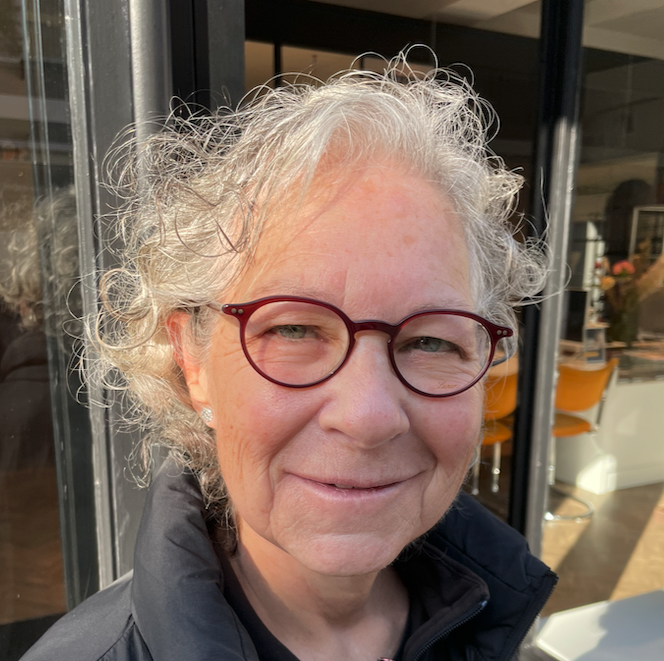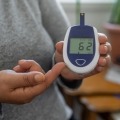Why ‘Controlling’ Blood Sugar Shouldn’t Be the Goal
By Riva Greenberg
 Riva Greenberg, who has lived with type 1 diabetes for over 50 years, explains how managing blood sugar – rather than trying to control it – has improved her time in range with less stress.
Riva Greenberg, who has lived with type 1 diabetes for over 50 years, explains how managing blood sugar – rather than trying to control it – has improved her time in range with less stress.
No person with diabetes, no matter how many years they’ve had it, has achieved "control" of their blood sugar. In fact, I would argue that “control” is not possible at all.
It has to do with the word control itself, but more on that later.
Even people who use the latest technologies – including insulin pumps, continuous glucose monitors (CGM), smart insulin pens, and hybrid closed loops – won’t have perfect levels every day. Most will see an improvement in their time in range, but not control.
I saw this firsthand at the 2023 EASD conference in Hamburg, Germany, where many of my fellow diabetes advocates wearing hybrid systems had their alarms go off frequently.
It may feel disheartening, but understanding that “control” over blood sugar levels is not possible can be liberating and empowering. If you think of it as a process of managing with the goal of improvement, it can free you from chasing the impossible goal of perfection, easing the stress, frustration, disappointment, guilt, and self-blame that can come from feeling like you failed.
I’ll explain below how to better work with the constant fluctuations of blood sugar and share some of my practices for navigating (as opposed to controlling) it.
The complex science behind blood sugar management
Our heartbeat, blood pressure, gut and brain signaling, digestion, liver processes, nervous system, and more all interact and influence blood sugar levels. So does living in an unpredictable world.
Personally, every morning I deal with the “dawn effect.” I need to take 1 unit of rapid-acting insulin immediately or I’ll go up 30 points in minutes. The stress of presenting at a conference, even though I feel relaxed, releases hormones that raise my blood sugar.
Adam Brown’s 42 Factors that Affect Blood Glucose is always worth sharing to remind us how many factors, biological and environmental, impact blood sugar.
I am not using the word “control” like we use the word “manage.” To manage comes from the Italian word maneggiare, meaning to handle and train horses. It suggests a mutual adapting to, respecting, and evolving between two complex entities: the horse and rider. Or, in this case, the complex dance between humans, the environment, and blood sugars.
The meaning of control comes from the machine world. It describes functions that are linear, predictive, and show cause and effect: do "this" and "that" will happen. Machines are built for precision and accuracy, humans are not.
Even after living with type 1 diabetes for 51 years, I cannot, for example, see 142 mg/dL on my CGM, decide I want to be 102 mg/dL, and make it happen. Yes, I’ll take some insulin or go on a walk, but I cannot guarantee exactly where my blood sugar will settle.
This was much to the chagrin of my husband who early in our marriage thought there must be a few root causes I could manipulate and the effect would be absolute control. But one evening, 15 minutes after I’d ordered my meal in a restaurant and pre-bolused, the waiter came back to say, “There’s been an accident in the kitchen, your meal will take another 20 minutes.”
That’s when the husband saw that managing blood sugar is not a cause-and-effect task but a complex one that relies on constant sensemaking. Sensemaking is the act of trying something and seeing what happens. We do it all the time but we don’t recognize it.
You may think what I’m saying is obvious, but the word “control” is used so often in the language of diabetes that on some level we have absorbed it as true and possible. We hold ourselves responsible for our numbers thinking we should be judged on them. This causes a lot of unnecessary suffering.
Why do we believe we can ‘control’ blood sugar?
During the industrial and scientific revolutions, the idea of machine efficiency was brought into medicine. The human body was widely viewed as a machine. This can be useful for acute care but fails miserably for chronic care, as is the case for managing diabetes.
But machine thinking seeped into diabetes care with control-like, statistical formulas: insulin-to-carb ratio, insulin-on-board, pump algorithms, and carb-counting. Don’t get me wrong: these are enormously helpful, but they don’t turn us into machines.
Improving time in range
Success in managing blood sugar and spending more time in range is knowing how to influence your numbers and sensing what to do with any blood sugar number you see.
This requires you to have a general knowledge of how things affect your blood sugar and a familiarity with your patterns. That said, because so many variables are involved, any action may take some trial and error.
Here are steps that help me spend, on average, 90% time in range.
Influencing your blood sugar
-
Wear a CGM: I recommend wearing a CGM to anyone with diabetes, particularly if you use insulin. You need to be able to see your numbers to know where you are and where you’re going. A CGM is also an easy way to see your patterns: check your blood sugar before and two hours after a meal or physical activity to see its impact on your blood sugar. If you don’t use a CGM, you can check for patterns using a meter. While the 2-hour check is a mechanical rule, it will give you a sense.
-
Routine: I eat the same breakfast of plain Greek yogurt, a spoonful of tahini and almond butter, and a slice of a flaxseed muffin every morning when I’m home. My lunches and dinners are similar day to day in quantity and carbs, and I follow a low-carb diet. Eating and exercising consistently also helps my numbers be more similar day to day.
Nudging: small pushes back into range
I follow Dr. Richard Bernstein’s “law of small numbers.” If I’m too high, I take a small amount of insulin to nudge my numbers down, wait, watch, and repeat if necessary.
When I need to raise my blood sugar, if it’s not dangerously low, I’ve learned to take one or two glucose tablets and watch what happens rather than eat everything in the refrigerator like I used to.
Practicing patience and forgiveness
Managing blood sugar takes vigilance. You’ll have more energy to do it when you flow with your numbers, rather than fight them. That means staying calm and seeing the big picture. It means knowing that many variables, not just your decisions, affect blood sugar.
That said, I’m far from perfect. I certainly have times I feel overwhelmed or frustrated by my numbers and my mind shouts, “How could I let that happen again? Why didn’t I wait before I took that extra shot?”
But the temptation to think why didn’t I do this instead of that is useless since I can only know which decision was better in hindsight.
To help my nervous system stay calm, I practice this simple exercise – sometimes during the day or when I’m tempted to rage bolus.
I stand with my knees unlocked, feel my feet on the floor, let my arms rest by my side or hold them over my chest, and slow my breathing. I acknowledge this number is not my fault. My actions alone didn’t cause it. Then I reflect as best I can on what might have created it so I might do better in the future. I think, what do I do now, and do it; I don’t dwell on the number.
In closing
It’s important to mention that managing diabetes is not easy. If it was, more than 50-60% of people with diabetes would reach the time in range recommendation, which is 70% of the time (the equivalent of 17 hours a day).
This past summer at Camp Nejeda I presented this myth of “control” to adults who have been living with type 1 diabetes for decades. They all knew it instinctively, but hearing someone say it caused one woman to sob, releasing years of blame she had been carrying.
It’s time we realize that it’s more accurate and helpful to tell people to “manage” their blood sugar instead of “control” it. Our numbers emerge from dozens of factors, some within our sphere of influence, many not. As such, we’re responsible for our efforts but not our outcome.
Rest in this understanding and see if giving up the idea of perfect numbers helps you spend more time in range with less stress.








